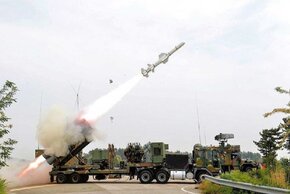By my estimate, Australian RGM-84 Harpoons would be at least ~15 years old at this point, but it is also quite conceivable that some Harpoons or at least critical components of them like motors, could be much older since Harpoon would have entered Australian service at least as far back as 1980 aboard the Adelaide-class FFG's.
Depending on just how many Harpoons Australia still has, what their condition is and how much time is left before they need to undergo re-cert/re-manufacture then even mothballing them might be a waste of resources. If many or even most of the Australian warstock is about to become expired, then Australia is likely better off with just a complete replacement, with any funding going towards purchasing more new ordnance rather wasting it on mothballing or re-manufacture.
Trying to preserve old ordnance could end up leading to Australia funding a stockpile of duds.
Australia presently operates at least 3 variants, with UGM-84D Block 1C Block I’s being fitted to our Collins class, AGM/RGM-84J (upgraded AGM/RGM-84D Block 1C) and A/RGM-84L Block II.
The UGM missiles fitted to Collins “may” also have been upgraded to UGM-84G standard which are an upgrade to the UGM-84D Block 1C standard which dates back to 1985, but I can’t find any writings on that, however re-certification efforts conducted through sustainment would likely be with the more recent variants, not the older ones.
Australia acquired both new build AUR Block II’s (64x) and 64x Block II upgrade kits for AGM-84D Block 1C (hence the AGM-84J missiles in-service) in the mid-late 2000’s, so at best even including re-certification efforts our remaining missiles are 15-20 years old.
This may not matter too much in a Ukrainian context, a supply of +/- 120 - 130 missiles (for example - have no idea what the actual inventory is) would likely be exhausted within months I would expect, but I am quite sure they would be profitably employed in such a context. Much more so than in a coastal battery role for Australia (which would require development and integration work and resources) or in some “warstock” role, which would require on-going sustainment, training and logistics resources to maintain.
Such resources would be better directed to acquiring and supporting the more capable weapons we have / are replacing Harpoon with and which in some cases we are manufacturing (NSM / JSM) locally. I’d rather put that money into buying and sustaining more NSM / JSM than keeping an older missile that could actually be profitably employed elsewhere.



